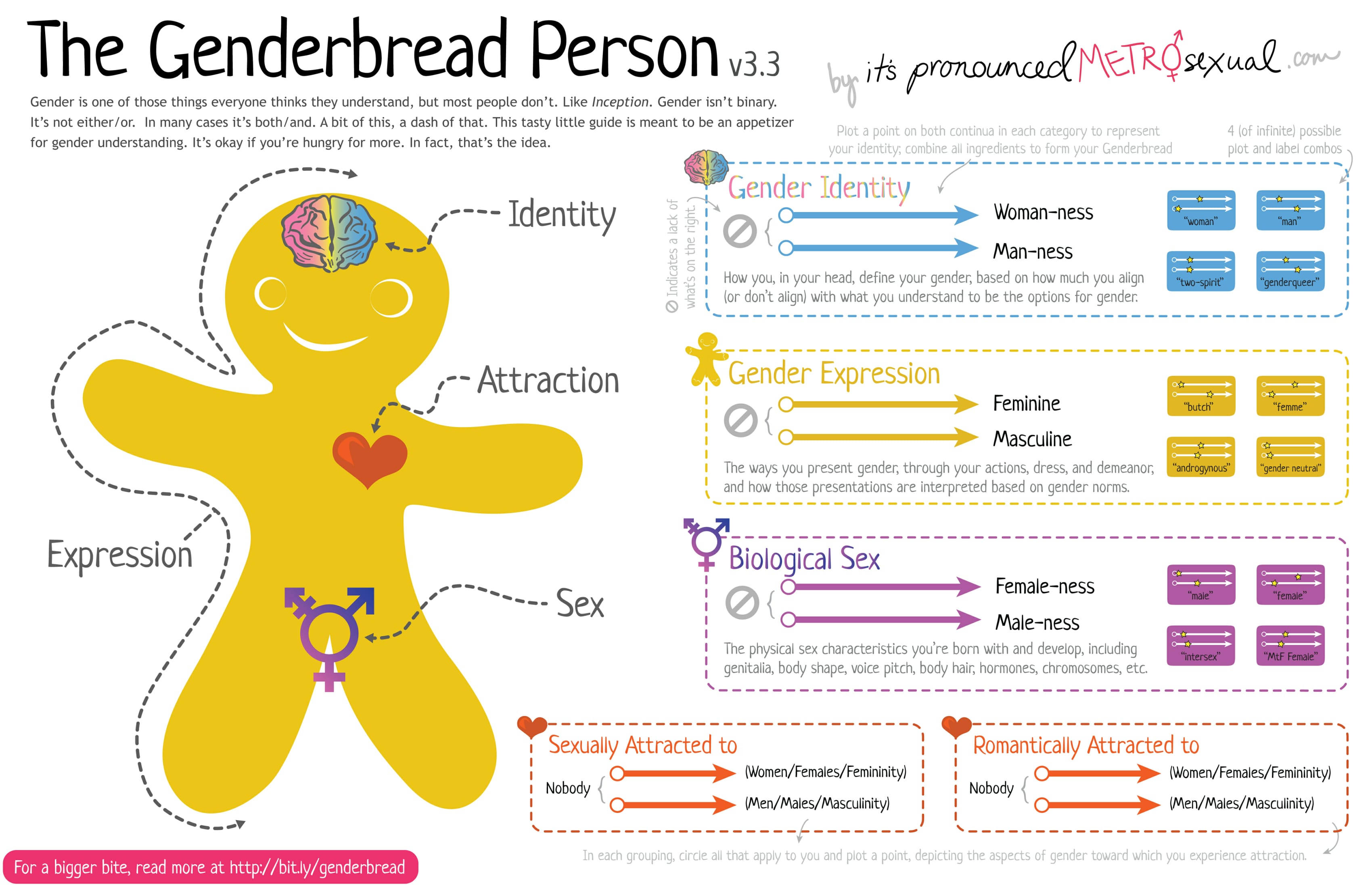The concept of gender identity as a spectrum rather than the binary concept of male or female is becoming more accepted. With this change, new terminology has emerged and you may find that patients identify with terms with which you are unfamiliar. Gender-related terminology can sometimes be used differently by health care professionals, patients, and community members. When working with patients and families, it is important to be respectful and clarify what certain terms mean to the patient so that you can be best understand their identity.
Below are some of the more common terms you are likely to encounter when dealing with the transgender or LGBTQQIP2SAA (see below) population.
- Bigendered: A person whose gender identity encompasses both male and female genders.
- Biological sex: A person’s sex according their physical male or female attributes (e.g., sex-determining genes, chromosomes, gonads, hormones, internal and external reproductive structures).
- Bisexual: Sexually attracted to both males and females.
- Cisgender: Individuals whose affirmed gender matches their biological sex; the opposite of transgender.
- Female to male (FtM): See transgender male.
- Gay: A term used to describe someone that is sexually attracted to the same gender.
- Gender identity: The sense one has of being male or female.
- Gender dysphoria: A medical term used in the Diagnostic and Statistical Manual of Mental Disorders, fifth edition (DSM5), to describe the disturbance or distress people feel from the discordance between their anatomic gender and gender identity. Previously known as gender identity disorder.
- Note: Not all gender-variant or transgender individuals experience gender dysphoria.
- Gender expression: The way people express their gender identity. Examples include behavior, clothes, haircuts, and communication patterns.
- Gender non-conforming: A term for behavior or appearance by an individual that does not meet societal norms associated with a specific gender.
- Gender role: Behaviours, attitudes, and personality traits that a society in a given historical period designates as “masculine” or “feminine.”
- Gender variance: See gender non-conforming.
- Intersex: An individual born with ambiguous genitalia.
- Lesbian: A term used to describe women that are sexually attracted to women.
- LGBTQQIP2SAA: The expanded LGBT acronym; Lesbian, Gay, Bisexual, Transgender, Queer, Questioning, Intersex, Pansexual, Two-Spirited, Asexual, Allies.
- Male to female (MTF): See transgender female.
- Pansexual: Someone with a fluid sexual orientation; not only attracted to males and/or females.
- Sexual orientation: The tendency to be romantically or physically attracted to persons of the same sex, opposite sex, both sexes, neither sex, or a spectrum. Sexual orientation is distinct from gender identity and gender expression.
- Trans: A person who currently identifies as a trans person (see transman, transwoman). For some, this term is synonymous with transgender.
- Transgender: Individuals with an affirmed gender identity different than their natal sex.
- Transgender female: A natal male who identifies as female.
- Transgender male: A natal female who identifies as male.
- Transition: The period of time when a person begins the process of living in his or her new gender.
- Transman: See transgender male.
- Transphobia: irrational fear of, aversion to, or discrimination against transgender or gender nonconforming people.
- Transsexual: An older term for transgender.
- Transwoman: See transgender female.
- Two-spirited: A tradition in many First Nations communities that considers sexual minorities to have both male and female spirits.
- WPATH: Stands for the World Professional Association of Transgender Health. An international organization that provides comprehensive ethical guidelines concerning the care of patients with gender identity disorders.

